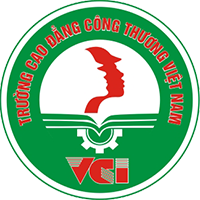How to Win Big in Mines: A Step-by-Step Guide
Winning big in mines requires a combination of knowledge, strategy, and luck. It’s not just about digging up diamonds or gold; it’s about understanding the underlying geology, managing risks, and making informed decisions. In this article, we’ll provide you with https://mines-page.com/ a step-by-step guide on how to increase your chances of winning big in mines.
Understanding the Geology
Types of Deposits
Before you start mining, it’s essential to understand the types of deposits that exist in the area. There are two main types: economic and noneconomic deposits. Economic deposits are those that can be mined profitably, while noneconomic deposits are not worth extracting due to low grades or high costs.
Assessing the Deposit
To determine whether a deposit is economic, you need to assess its grade, size, and geology. The grade refers to the concentration of valuable minerals in the ore, while the size refers to the volume of rock that needs to be extracted. Geology plays a crucial role in determining the feasibility of mining a particular area.
Geological Mapping
Geological mapping involves creating detailed maps of the geology in the area. This includes identifying the types of rocks present, their orientation, and any potential structural features such as faults or folds. By understanding the geological setting, you can identify areas with high potential for mineralization.
Conducting a Geological Survey
A geological survey is an essential step in determining whether a mine has economic potential. It involves collecting data on the geology of the area, including sampling and assaying of rock samples. The survey should also include a review of existing data and literature to gain insights into the geology of the region.
Drilling Programs
Once you have identified areas with high potential for mineralization, it’s time to conduct drilling programs. Drilling helps to confirm the presence of minerals and provides valuable information on their distribution and grade. The type of drilling program will depend on the size and complexity of the deposit.
Sampling and Assaying
Types of Samples
There are two types of samples: rock samples and core samples. Rock samples involve taking a representative sample of rock from the mine, while core samples involve collecting cylindrical cores of rock using a drilling machine. Both types of samples provide valuable information on the grade and distribution of minerals.
Interpreting Results
The results of your sampling and assaying program will determine whether the deposit is economic or not. If the results indicate high grades and sufficient size, you can proceed with planning for mining operations.
Planning Mining Operations
Once you have determined that a mine has economic potential, it’s time to plan for mining operations. This includes designing the mine layout, selecting equipment, and developing a schedule for extraction.
Mine Design
Mine design involves creating a detailed plan for extracting minerals from the deposit. This includes identifying the optimal excavation method, determining the size of the mining panels, and planning for ventilation and drainage systems.
Managing Risks
Mining is an inherently risky business, and there are several risks that you need to manage:
- Geological risks : These include the risk of unexpected geological events such as landslides or subsidence.
- Environmental risks : These include the risk of environmental damage due to mining activities.
- Social risks : These include the risk of conflict with local communities.
Risk Management Strategies
To manage these risks, you need to implement robust risk management strategies. This includes conducting thorough geological and environmental assessments, engaging with local communities, and developing emergency response plans.
Conclusion
Winning big in mines requires a deep understanding of geology, mining technology, and risk management. By following the steps outlined in this guide, you can increase your chances of success in the mining industry. Remember to always prioritize safety and environmental sustainability when planning for mining operations.
Appendix: Key Terms and Concepts
- Deposit : A body of rock that contains valuable minerals.
- Economic deposit : A deposit that can be mined profitably due to high grades or sufficient size.
- Noneconomic deposit : A deposit that is not worth extracting due to low grades or high costs.
- Grade : The concentration of valuable minerals in the ore.
- Size : The volume of rock that needs to be extracted.
Note: This article provides a general guide and is not intended to be taken as professional advice.
